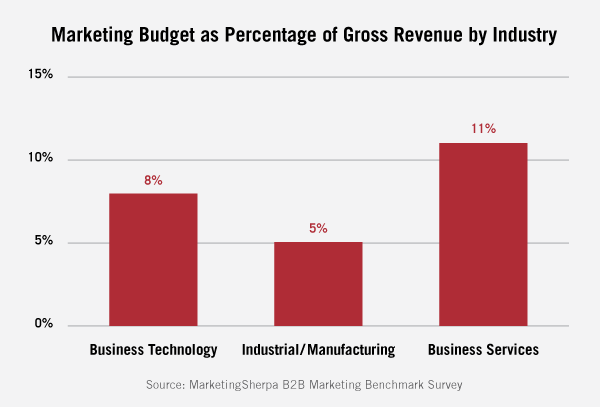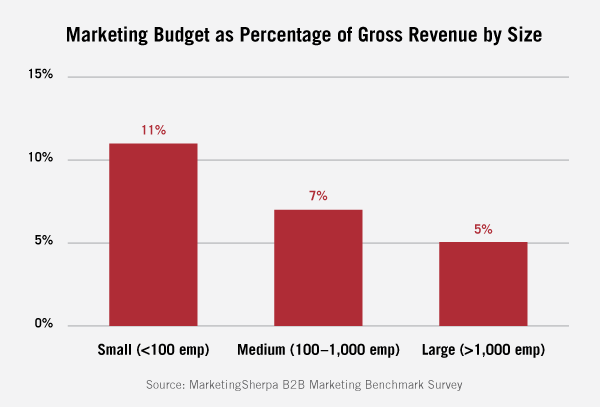
Why Employee Satisfaction Isn’t Enough
For years, the name of the game for managing people was employee satisfaction. With a changing labor market and higher employer standards, that focus is changing.
From small businesses to multi-million dollar corporations, we can all agree that marketing is essential to your profitability and growth. In the race for market share, marketing efforts are like Nike shoes and Gatorade – they provide your company with the fuel and support you need to generate sales. But as you go about trying to determine just how much to spend on marketing, you’re often left with a chicken-egg dilemma. Do we need to spend more money on marketing to generate sales? Or do we first need sales revenues to justify marketing expense?
If you find yourself on that train of thought, let us stop you right there. The US Small Business Administration probably says it best: “Your marketing budget should never be based on what’s left over after all your other business expenses.” In other words, if you view marketing as an “afterthought expense” on the P&L, you’re tying your company’s shoelaces together.
The late great Peter Drucker – who is credited with the philosophical and practical foundations of the modern business corporation – held this deep-seated belief:
“The business enterprise has two -- and only two -- basic functions: marketing and innovation. Marketing and innovation produce results; all the rest are costs.”
To put this another way: Functions such as administration, finance, accounting, HR, IT, and operations are all costs necessary to run the business. While many of these arenas deliver savings, performance improvements, and profit maximization, marketing’s function is to drive new revenue.
With that in mind, setting the budget for any marketing effort should be based on the potential return of that effort.
Sometimes the potential return can be tricky to quantify, however, and in that case the most straightforward approach to calculating a marketing budget is to use the Marketing Budget Ratio (MBR). This is determined by dividing your marketing investment by total revenue, and is expressed as a percentage of your total gross sales. A target MBR can range anywhere from 2-20% depending on your industry, business lifecycle, and competitive pressures.
What do we recommend at Kinesis? The short answer: 5-11%. But the truth is, it depends on a number of factors.
First and foremost, your marketing budget should be predominantly informed by your product offering. For example, most of our clients work in the professional services arena. This can be broken down further, however, into business technology, business services, and industrial/manufacturing:

As you can see, business services lead the charge in marketing spend at 11%, while industrial and manufacturing are a little behind the curve compared to their peers. This could be partly due to a high cost of goods sold in the manufacturing industry – and when you back out the costs of materials, raw goods, etc., gross profit becomes a more relevant figure from which to draw the MBR.
But even within those specific classifications, there is further differentiation from company to company, with other factors that greatly influence investment. Such as…
Another important consideration when determining your marketing budget is the size of your company. Marketing Sherpa cites the following averages by organization size:

It may come as a surprise that as a company grows in size, their MBR decreases. There are two different factors at play here:
Obviously startup companies with huge growth goals have a lot more marketing to do than a more established brand would. For those initial brand building years, the US Small Business Administration estimates that many businesses’ MBR is upwards of 20%.
Even aside from the early years of branding, however, any company with aggressive growth plans should see marketing as a very high priority.
It’s also a good idea to look at industry trends – how your competitors are sizing up and deploying their marketing dollars. How competitive is your company in your market, and what share of brand awareness do you have? With marketing becoming a more prevalent dialogue in every industry, it is safe to assume that your competition is having this conversation internally as well.
Moreover, almost 60% of companies reported plans to increase their marketing budgets this year. So even if your competitors are not yet devoting much thought or budget dollars to marketing yet, chances are that this will change – and soon.
So before sitting down to write a marketing budget, make sure you’re taking all of these key factors into consideration. But more importantly, consider it an investment in revenue generation – thereby aligning your marketing with bottom-line profitability, and propelling your company across the finish line.
Get insights like this straight to your inbox.